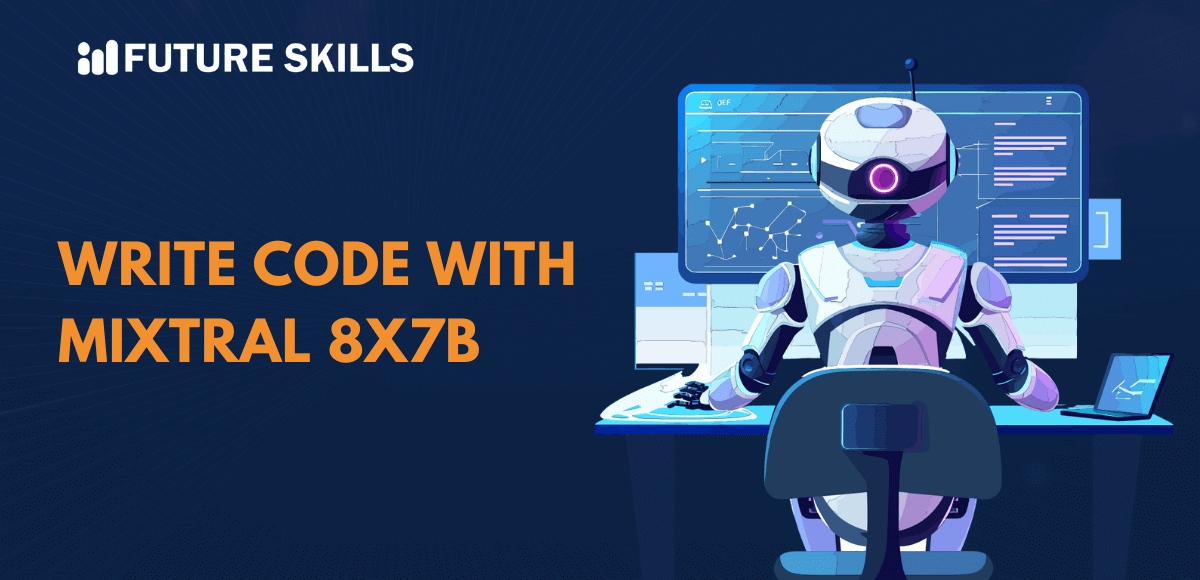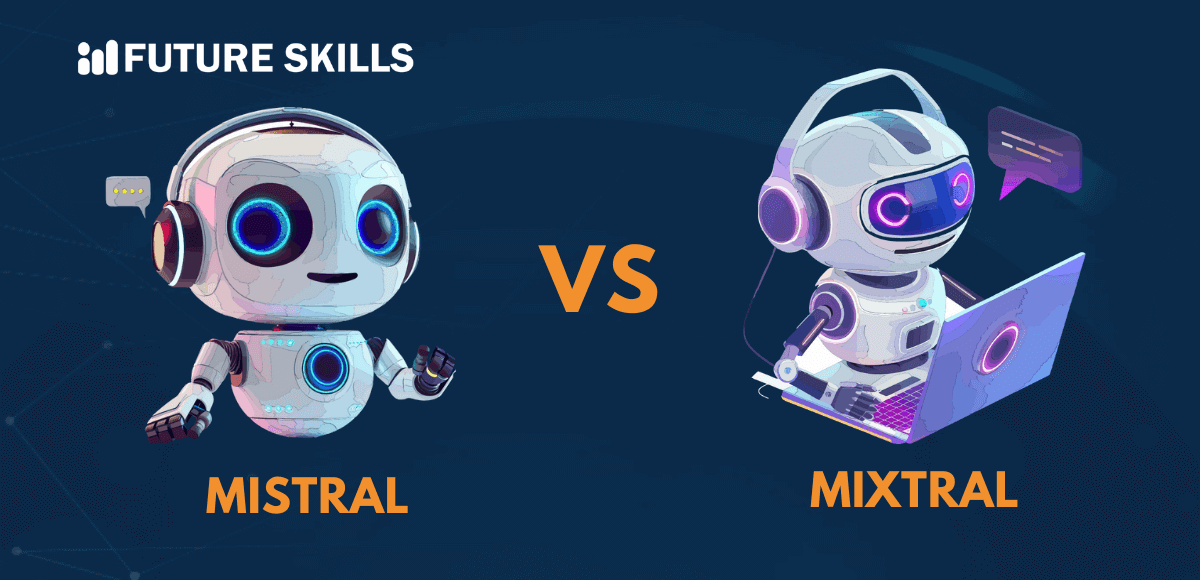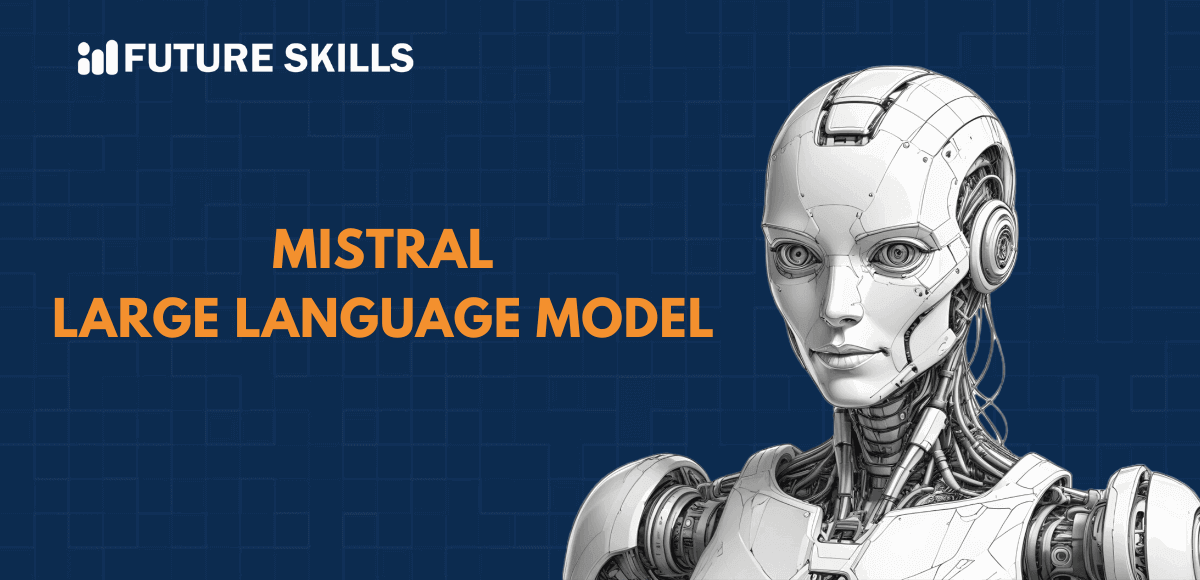Mistral AI has proved its mettle as a formidable competitor to OpenAI and Google in generating language models. One of the most promising aspects of contributions by Mistral AI is the mission of delivering ideal open models to developer communities. The Mistral AI team released the Mixtral 8x7B model in December 2023 as one of the best open models for the developer community.
You might have curiosities about the best practices to write code with Mixtral 8X7B and adapting to the new requirements of productivity and efficiency. The secret to competitive advantage in a continuously evolving AI landscape revolves around moving beyond the reuse of popular training paradigms and model architectures. Mixtral 8x7B represents the efforts of Mistral AI to help the community make the most of original models and encourage new innovations. Let us learn more about best practices for coding with Mixtral 8x7B.
Get the best learning experience and become a professional AI expert with Certified AI Professional (CAIP)™ course that can kickstart your career and help you build a bright career.
What Should You Know about Mixtral 8x7B?
The unique offerings by Mistral AI, such as Mistral 7B and Mistral Large, have introduced efficient and productive alternatives to existing players in the AI ecosystem. Before you learn how to use Mixtral 8x7B, it is important to learn about the model. Mixtral 8x7B is a high-quality, open-weight model by Mistral AI that outperforms GPT-3.5 in different aspects. It leverages the Sparse Mixture of Experts or SMoE model and works under the Apache 2.0 license. Mixtral 8x7B has surpassed Llama 2 70B in terms of different benchmarks with faster inference.
As of now, Mixtral 8x7B is the strongest model in the open-weight Mistral AI model family. On top of it, Mixtral 8x7B is also the ideal model in terms of cost and performance tradeoffs. The emphasis on Mixtral 8x7B coding capabilities revolves around new highlights of the model, such as the context window that can accommodate 32k tokens. It also supports languages such as English, Spanish, French, German, and Italian. Most importantly, you can fine-tune the model to follow instructions and get an impressive score on MT-Bench.
How Does Mixtral 8x7B Work?
The new capabilities brought by Mixtral 8x7B represent the scale of innovation and growth in the Mistral AI family. If you want to deploy Mixtral 8x7B, then you must understand that it works with the Sparse Mixture of Experts architecture. The SMoE architecture is similar to a decoder-only model in which the feedforward block would work according to a collection of 8 different groups of parameters. The router network would select two of the groups for every token in every layer to process the token, followed by combining the outputs from all layers.
The unique working mechanism of Mixtral 8x7B ensures that you have more number parameters without increasing cost and latency. You would not find any changes in cost and latency because the model relies only on a specific share of the total parameters available for each token. The capabilities to write code with Mixtral 8x7B Python programming tasks also draw attention to the availability of around 46.7 billion parameters.
However, it relies only on using 12.9 billion parameters for each token. As a result, the model can process input and come up with output at the same cost and speed as models with 12.9 billion parameters. Another crucial highlight in the working of Mixtral 8x7B is the pre-training of the model on data sourced from open Web.
Why is Mixture of Experts Architecture Used in Mixtral 8x7B?
Mixtral works with the Sparse Mixture of Experts architecture to achieve impressive performance at par with popular language models, albeit at lower costs. Is there any special reason to use the Mixture of Experts architecture in Mixtral 8x7B? The flexibility to write code with Mixtral 8x7B can be questioned as the model’s architecture is more complex. For instance, you can find 8 experts in the model, out of which the model relies on two experts for every token.
The primary reason to embrace such complexity is the assurance of achieving a total parameter count of 56 billion on paper. On the contrary, the actual parameter count of the model is slightly fewer than 56 billion, i.e., around 47 billion. The reduction in parameter count can be attributed to selective application of the Mixture of Experts method to the layers rather than self-attention weight matrices.
One of the prominent benefits that you can notice when you use Mixtral 8x7B is the functionality of the specialized router network. It helps in directing the tokens in such a way that ensures engagement of only 7 billion parameters at any specific time in a forward pass. Only two experts are responsible for processing every token. On the other hand, it is important to note that the choice of experts can be distinct for different layers. As a result, the model can capitalize on processing paths that require more complexity.
The selective engagement of parameters helps in ensuring faster training and inference processes. The efficiency offered by the selective choice of parameters can help capitalize on MoE models as compared to the conventional non-MoE models.
Boost your AI expertise and learn why it’s important to develop responsible AI with our Ethics of Artificial Intelligence (AI) course.
Does Mixtral 8x7B Offer an Instruct Model?
Yes, you can also capitalize on Mixtral 8x7B instruct model for fine-tuning tasks. The instruct model is available with the base model of Mixtral 8x7B and offers a chat model that has been fine-tuned to follow instructions. It leverages supervised fine-tuning or SFT alongside direct preference optimization or DPO on paired feedback datasets. Interestingly, the Mixtral-Instruct model can easily outperform some of the top contenders, such as Gemini Pro and GPT-3.5-Turbo.
How Can You Run Mixtral 8x7B Locally for Coding Tasks?
The different capabilities of Mixtral 8x7B create anticipation regarding the best practices recommended to deploy Mixtral 8x7B locally on your machines. It is important to note that Mixtral is an advanced model, and you would need GPU-level computational power. For example, you must have an NVIDIA GeForce RTX 4090 GPU with a 64 GB RAM and AMD Ryzen 7950X3D CPU.
-
Prepare the Environment and Install Python Libraries
First of all, you would have to prepare the environment for the installation process. You can start by establishing the Mixtral workspace in the Jupyter Notebook environment. In addition, you can write code with Mixtral 8x7B Python programming tasks by installing the essential Python libraries and packages required or Mixtral. The following command can help you with installation of Python libraries with the Jupyter Notebook.
!pip install -qU transformers==4.36.1 accelerate==0.25.0 duckduckgo_search==4.1.0
The command helps in installation of the ‘transformers’ library for model management and ‘accelerate’ to facilitate performance optimization. In addition, the ‘duckduckgo_search’ command helps in improving search capabilities for agent testing.
-
Load the Model and Initialize Tokenizer
You can access the Mixtral 8x7B Instruct model by downloading the base model directly from the Mistral AI website. After downloading, you would have to load the model by importing necessary modules. Here are the important lines that will help with the initialization of Mixtral model in the desired environment.
from torch import bfloat16 import transformers model_id = "mistralai/Mixtral-8x7B-Instruct-v0.1" model = transformers.AutoModelForCausalLM.from_pretrained( model_id, trust_remote_code=True, torch_dtype=bfloat16, device_map='auto' ) model.eval()
The next step involves initialization of the tokenizer. The tokenizer would help convert input text to a format that is suitable for Mixtral processing. Here is the command that can help you initialize the tokenizer.
tokenizer = transformers.AutoTokenizer.from_pretrained(model_id)
How Can You Leverage Mixtral 8x7B for Coding Tasks?
Mixtral 8x7B has become one of the formidable additions to the Mistral AI family of language models for coding capabilities. You can find an example of Mixtral 8x7B coding capabilities with a simple example. The following prompt shows how you can use the official Python client for coding with Mixtral 8x7B.
messages = [ ChatMessage(role="system," content="You are a helpful code assistant that helps with writing Python code for user requests. Please only produce the function and avoid explaining."), ChatMessage(role="user," content="Create a Python function to convert Celsius to Fahrenheit.") ] chat_response = get_completion(messages) print(chat_response.choices[0].message.content)
However, you can use Mixtral 8x7B for coding tasks only with the help of effective instruction formats. Instructions help in guiding language models toward accurate interpretation and effective responses to the prompts for coding. The instruction formats serve as structured language and help the model understand the context and goal of the inputs.
Instruction formats play a vital role when working with Mixtral 8x7B for coding tasks. They help bridge the gap between intent of users and understanding of models. It can support design of queries or statements to ensure efficient processing of the model. With the help of specific formats, users can determine the focus of the model. In addition, you can also derive more contextually accurate and relevant outputs.
Final Words
Mixtral 8x7B represents a major milestone in the domain of LLMs with its unique capabilities. For example, it offers a 32k token context window. In addition, the Mixtral 8x7B coding capabilities have become an important highlight in the world of AI. Interestingly, you don’t have to go through complex steps to install Mixtral 8x7B and start working on coding tasks. The impressive performance of Mixtral, compared to other models, explains why you should use it for coding. Dive deeper into the details of Mixtral 8x7B and how it performs in comparison to other Mistral AI models now.
Enroll in our most trusted AI Certification Course and learn the complex concepts of AI to skyrocket your career in no time.






